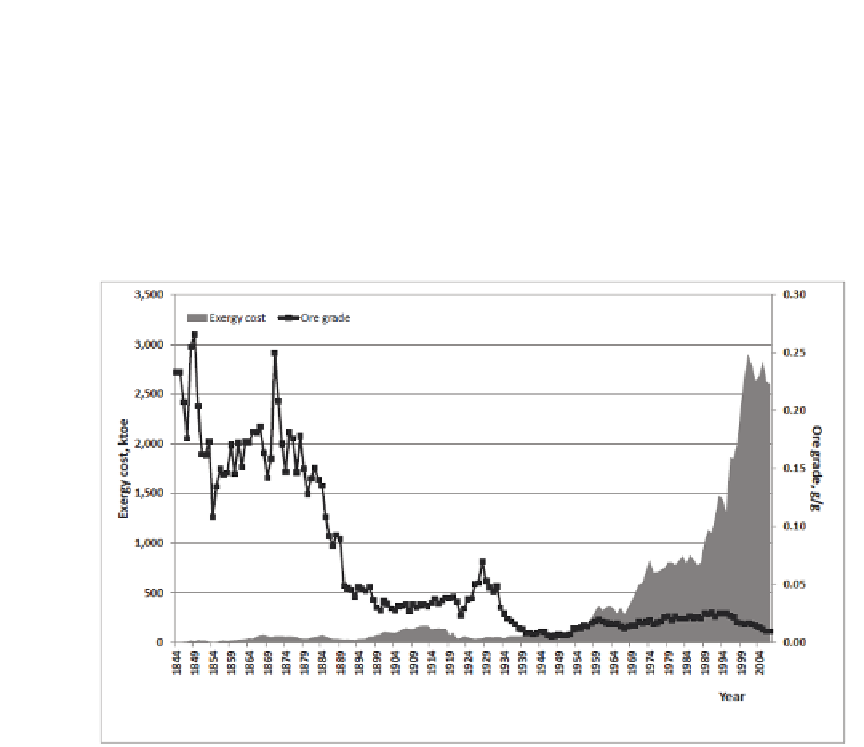Geology Reference
In-Depth Information
accordingly from a maximum of 1.68 toe/t in 1849 to 1.03 toe/t in 2007. Yet and de-
spite an accompanying 39% decrease in the natural exergy bonus, Australian copper
ore grades are still greater than that of any other country
3
. Additionally, a signifi-
cant amount of copper deposits have been discovered throughout the last quarter of
a century and prospects for the Australian copper industry remain promising. Ma-
jor world-class copper discoveries include Olympic Dam, Ernest Henry, Prominent
Hill, Northparkes, Cadia Valley, Carrapateena and Rocklands, with major reserves
still remaining at currently producing mines such as Mt Isa, Cobar and Mt Lyell.
Fig. 13.5 Ore grade and exergy replacement cost of Australian copper mines
The Hubbert Peak Model applied to Australian copper is shown in Fig. 13.6.
Considering that copper reserves are R
1884
= 242 Mtoe, the peak is set to occur in
2026. The regression factor is RF = 0:96.
13.3.3 Nickel
Large-scale production of nickel is one of Australia's youngest mining sectors be-
cause although very minor nickel production existed as early as in the 1910s, it
was in 1966, with the discovery of the large high grade Kambalda nickel field in
central Western Australia that production and exploration boomed. Since then,
extraction has continued to increase, albeit with a slight stagnation from 1977 to
1994 (see Sec. 13.7). The most recent nickel boom, beginning in the mid-1990s has
3
According to USGS (Various years), in the U.S. the current ore grade is around 0.5%.








Search WWH ::

Custom Search